Select from a variety of NeuroFUS® transducer configurations specific to your application
WHAT TRANSDUCER TO USE WITH NEUROFUS?
NeuroFUS offers three Cortical Focus Transducer (CTX) configurations and one micro-Focused Transducer (uTX). Each NeuroFUS uses one TPO to drive all four transducer configurations. Any number of purchased transducer configurations (1 to 4) may be calibrated to the same TPO.
The CTX transducers are offered at 250 kHz, 500 kHz and 1,000 kHz using a 60 mm diameter x 64 mm radius of curvature. Selecting the appropriate CTX transducer depends on the attenuation along the propagation path, focal size, and effective frequency in neurostimulation. The uTX-2500 operates at 2.5 MHz and is intended for small subject cortical and/or peripheral neurostimulation.
The table to the right compares the NeuroFUS transducer configurations’ focal sizes with their estimated derated focal intensity*.
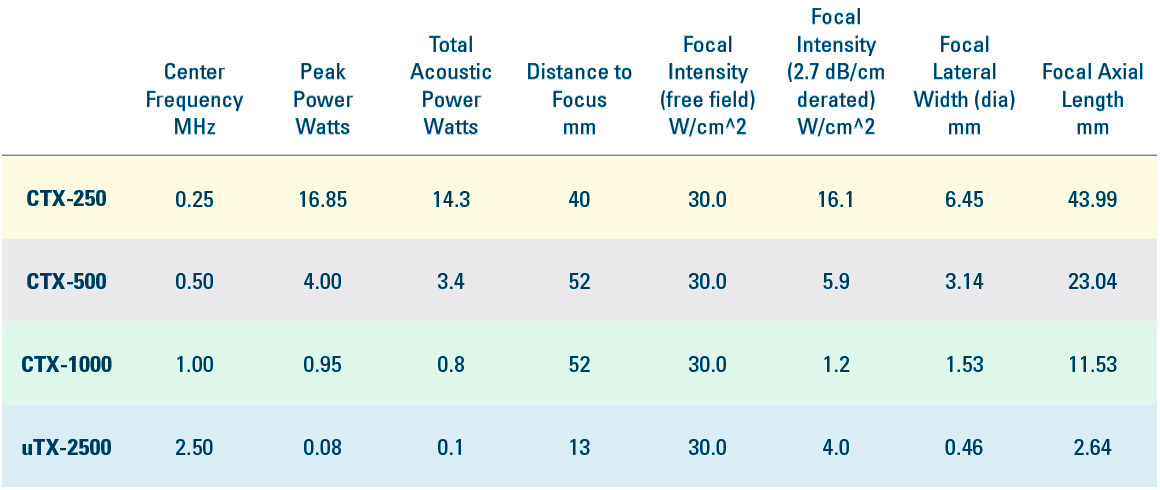
*Human skull average: ncbi.nlm.nih.gov/pubmed/22225300
CTX
Transcranial transducers for large subject and human research applications with axial focal steering
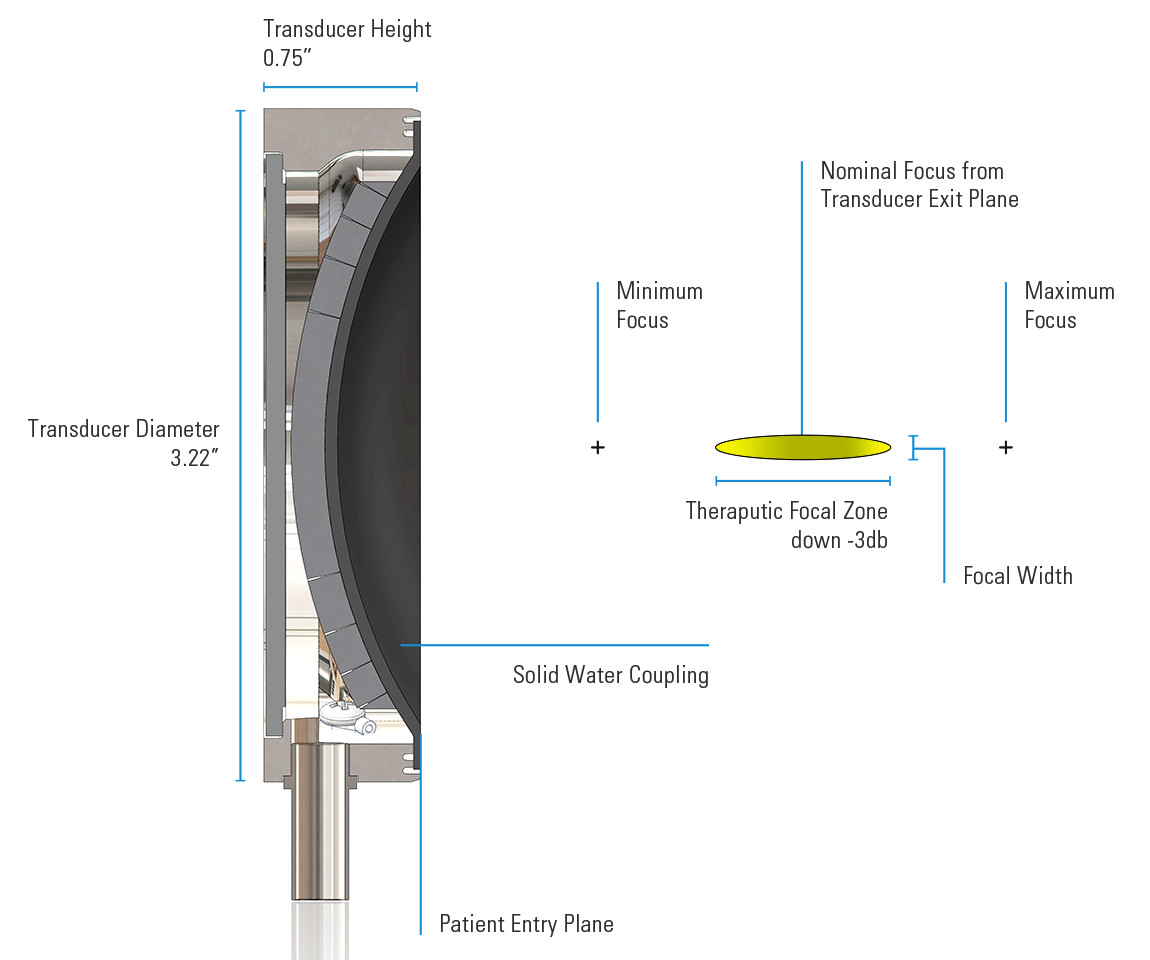
*CTX drawing not to scale
uTX
Micro transducers for small subject and in vitro research applications with axial focal steering
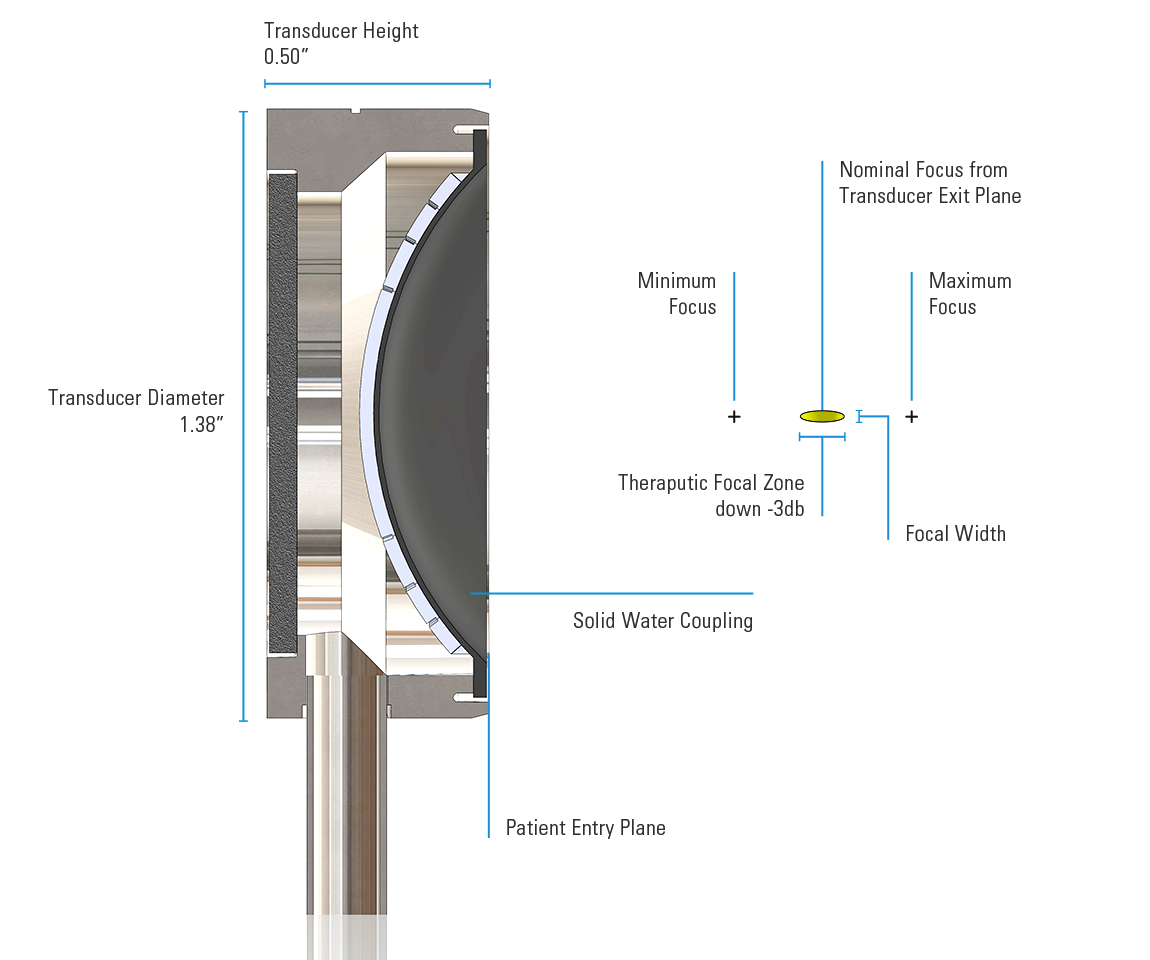
*uTX drawing not to scale
DPX
Deep-brain or deep-body research applications, with 128 channels and 3D focal steering.
CUSTOM TRANSDUCERS
NEUROFUS TRANSDUCER VERSIONS
NeuroFUS offers three Cortical Focus Transducer (CTX) configurations and one micro-Focused Transducer (uTX). Each NeuroFUS uses one TPO to drive all four transducer configurations. Any number of purchased transducer configurations (1 to 4) may be calibrated to the same TPO.
The CTX transducers are offered at 250 kHz, 500 kHz and 1,000 kHz using a 60 mm diameter x 64 mm radius of curvature. Selecting the appropriate CTX transducer depends on the attenuation along the propagation path, focal size, and effective frequency in neurostimulation. The uTX-2500 operates at 2.5 MHz and is intended for small subject cortical and/or peripheral neurostimulation.
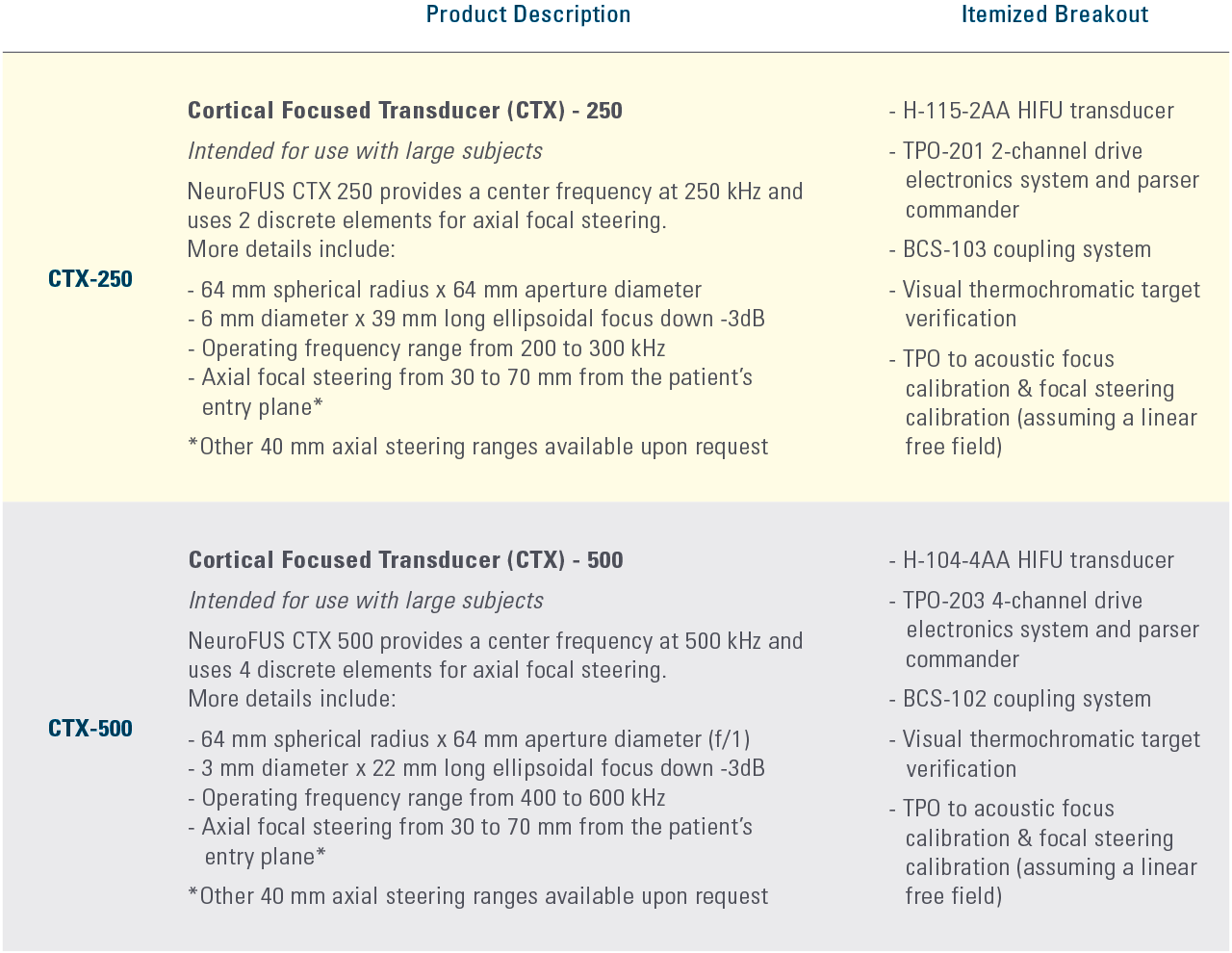

Note: Listed transducer focal sizes are simulated based on ideal conditions. Actual free field performance may vary and is provided for each transducer.
FOCAL INTENSITY
All NeuroFUS transducers convert 85% of electrical power into acoustic power. The total acoustic power (TAP) remains the same at each transverse plane along the propagation axis, assuming a linear free field. At the spherical surface of the transducer, the TAP can be interpreted as intensity (TAP/aperture area) and as pressure, where I = p^2/ (D x c) in Watt/m². The transducer’s frequency, spherical size and f-number are used to determine focal gain. This focal gain is then converted to intensity to predict free field estimates of the spatial-peak pulsed average intensity (ISPPA).
ATTENUATION
Transcranial applied ultrasound will be attenuated along the propagation path. Several studies have shown on average 2.7 dB/cm* is lost through the human skull between the transducer and focus. Of this attenuation, most of the loss is attributed to scattering and reflections within the skull. NeuroFUS hard limits the predicted non-derated (free field) ISPPA. Each NeuroFUS unit’s drive electronics are calibrated to the measured non-derated acoustic focus at Sonic Concepts using a needle hydrophone traceable to the National Physical Laboratory (NPL).
*Human skull average: ncbi.nlm.nih.gov/pubmed/22225300
SPATIAL RESOLUTION
The acoustic pressure field below illustrates the uTX-2500 transducer’s focus along the transverse plane. The coherent focus measures 0.5 mm lateral width x 2.6 mm axial length down -3 dB from its acoustic maximum. Units are in millimeters and the relative acoustic pressure data is displayed using a red (maximum) to blue (minimum) color spectrum.
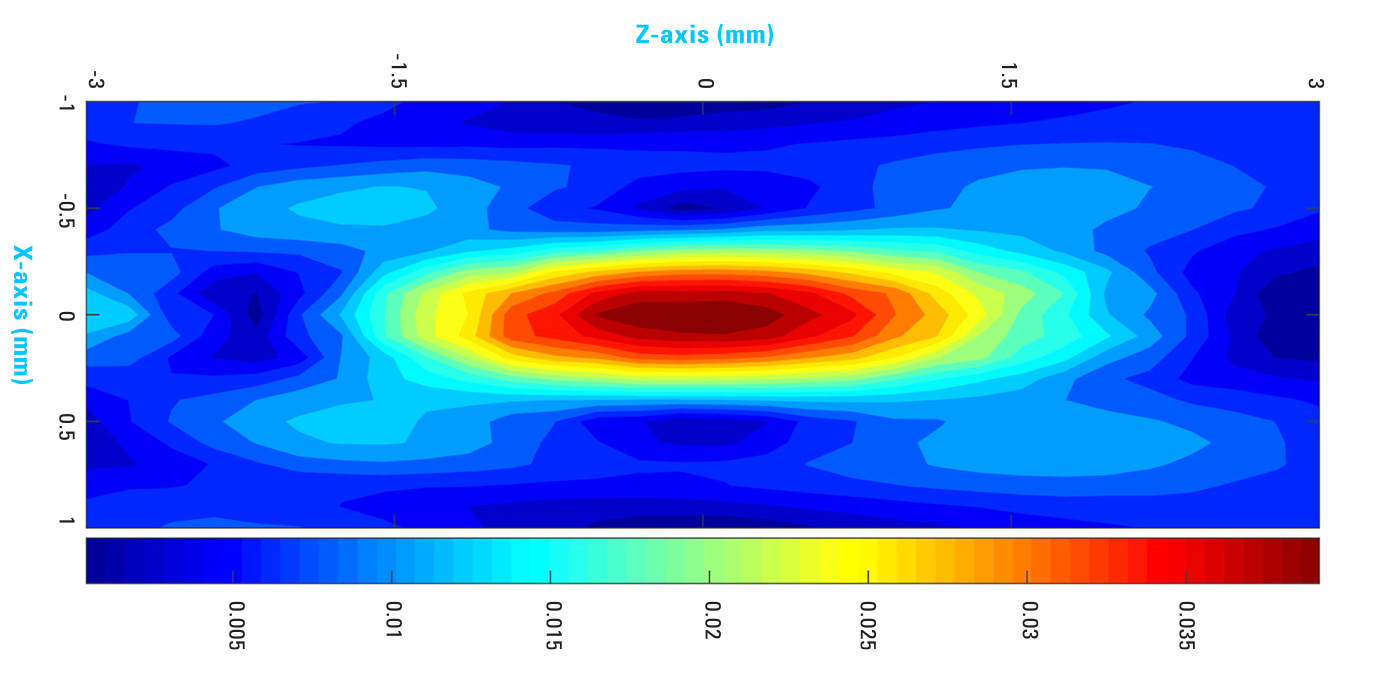
DYNAMIC FOCAL DEPTH STEERING
The acoustic pressure field maps below illustrate software-controlled spatial modulation of the NeuroFUS CTX-500 along the transverse plane. The NeuroFUS focus is shown at 30 mm (top left), 40 mm (top right), and 75 mm (bottom) depths.
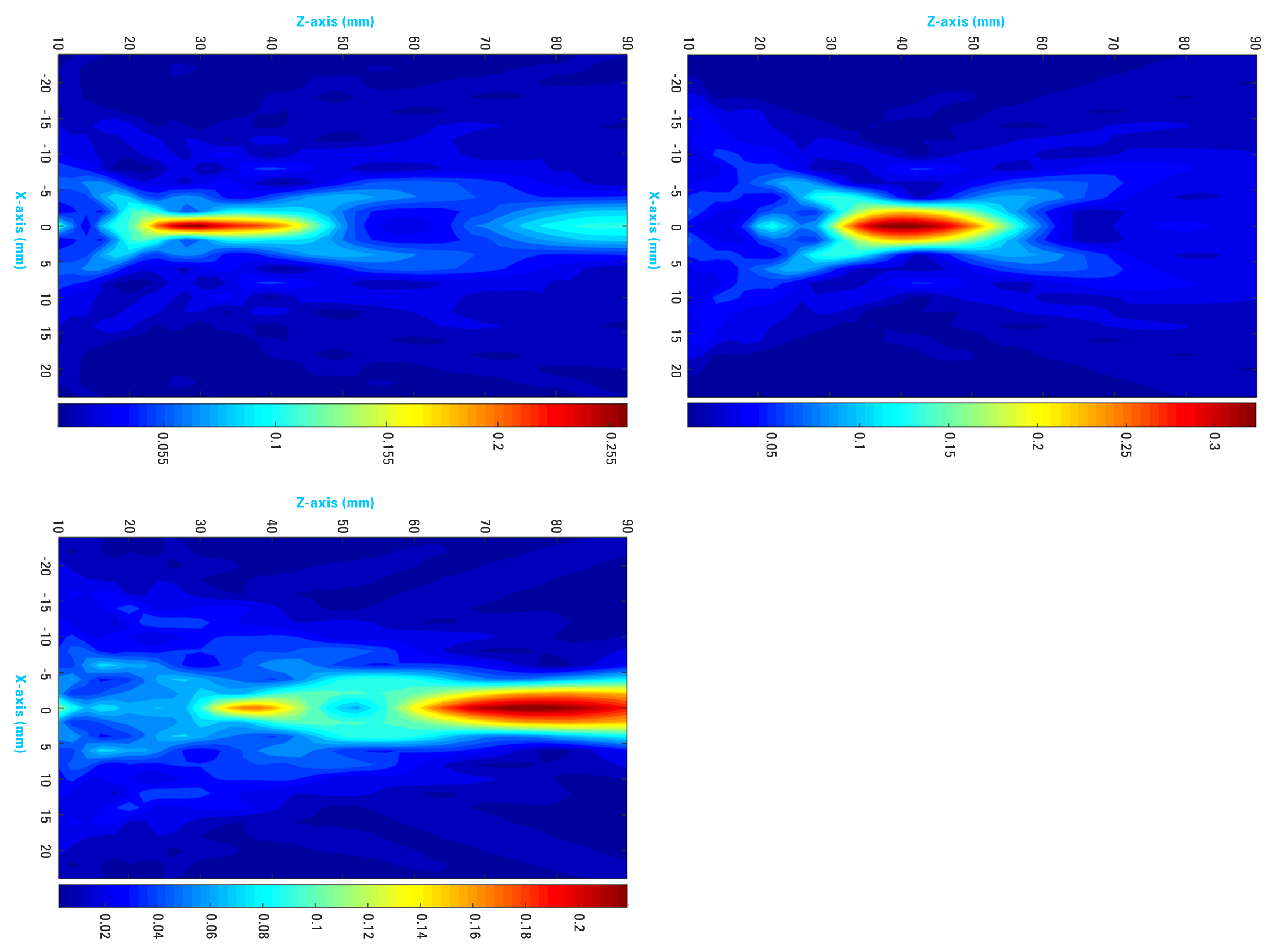
STEERING RANGE
The table below presents the steering range and penetration distance for each NeuroFUS transducer. Grating lobe range refers to the steering range tested where all grating lobes appear more than 10 dB from the intended main focus. The penetration distance refers to the distance between the transducer face and the focus, considering the grating lobe range.
POWER ESTIMATES & COMPARISONS
The table below calculates the effective electrical power required to compensate for the -3 dB steering loss. For example, when steering the CTX-500 to the minimum penetration distance of 32 mm, the power output doubles to correct for the -3 dB loss to maintain the 30 W/cm^2 intensity.
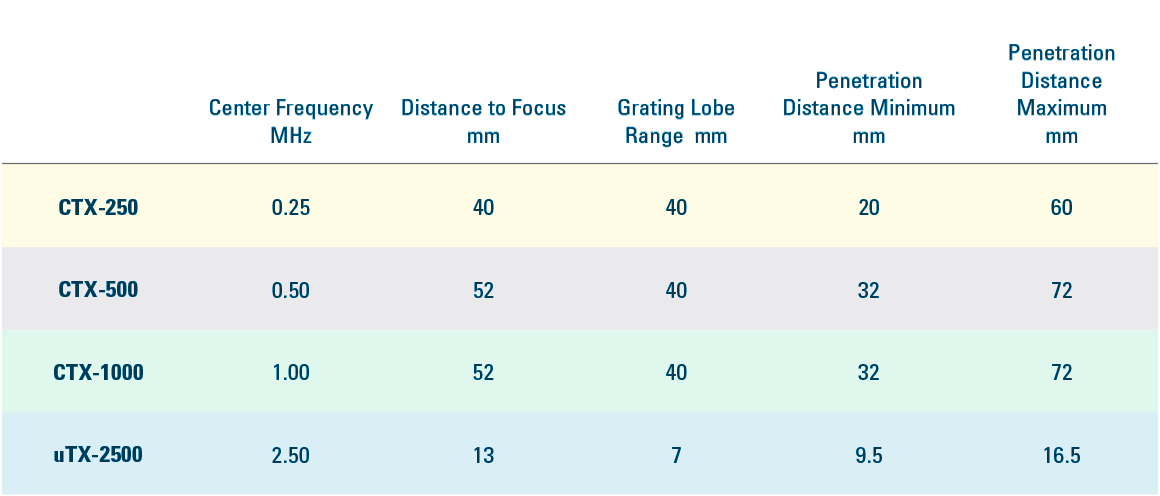
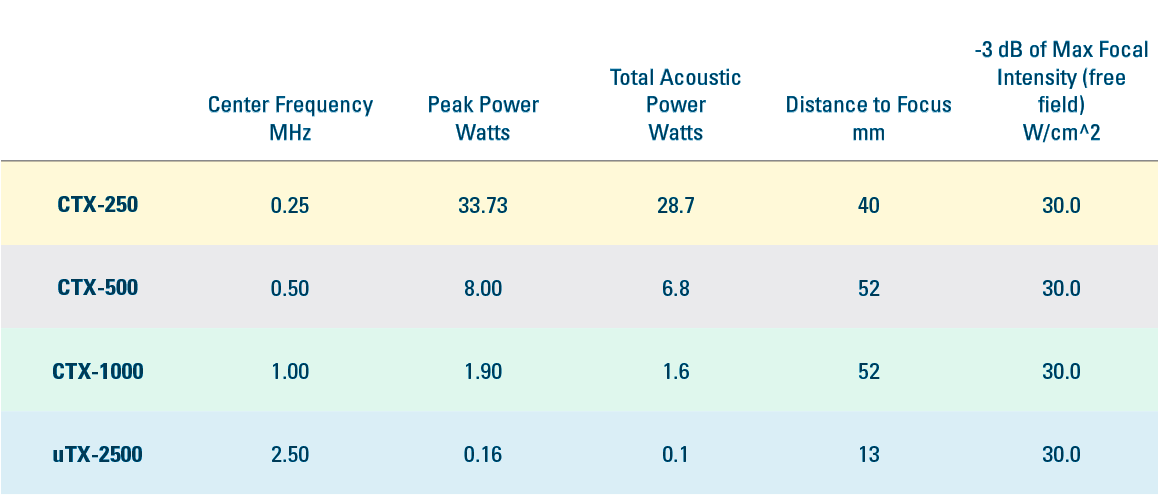
Note: Listed transducer focal sizes are simulated based on ideal conditions. Actual free field performance may vary and is provided for each transducer.
NeuroFUS is powered by Sonic Concepts, Inc.

